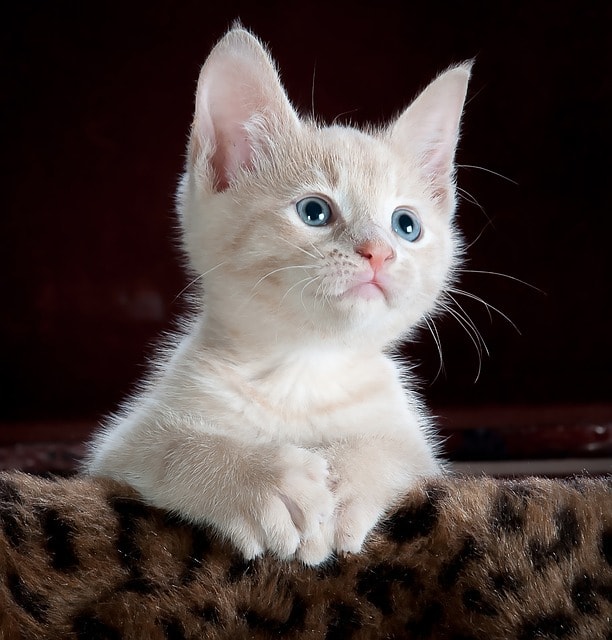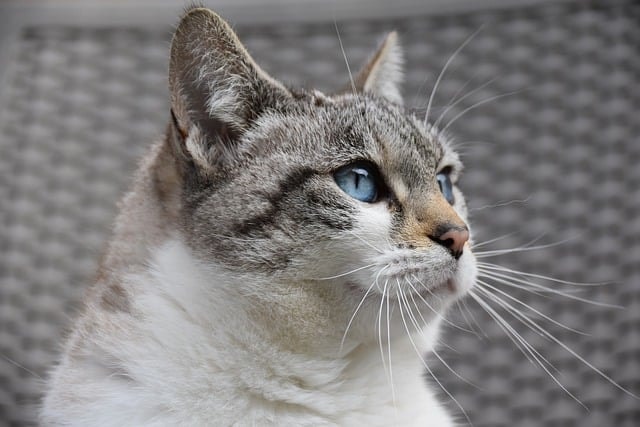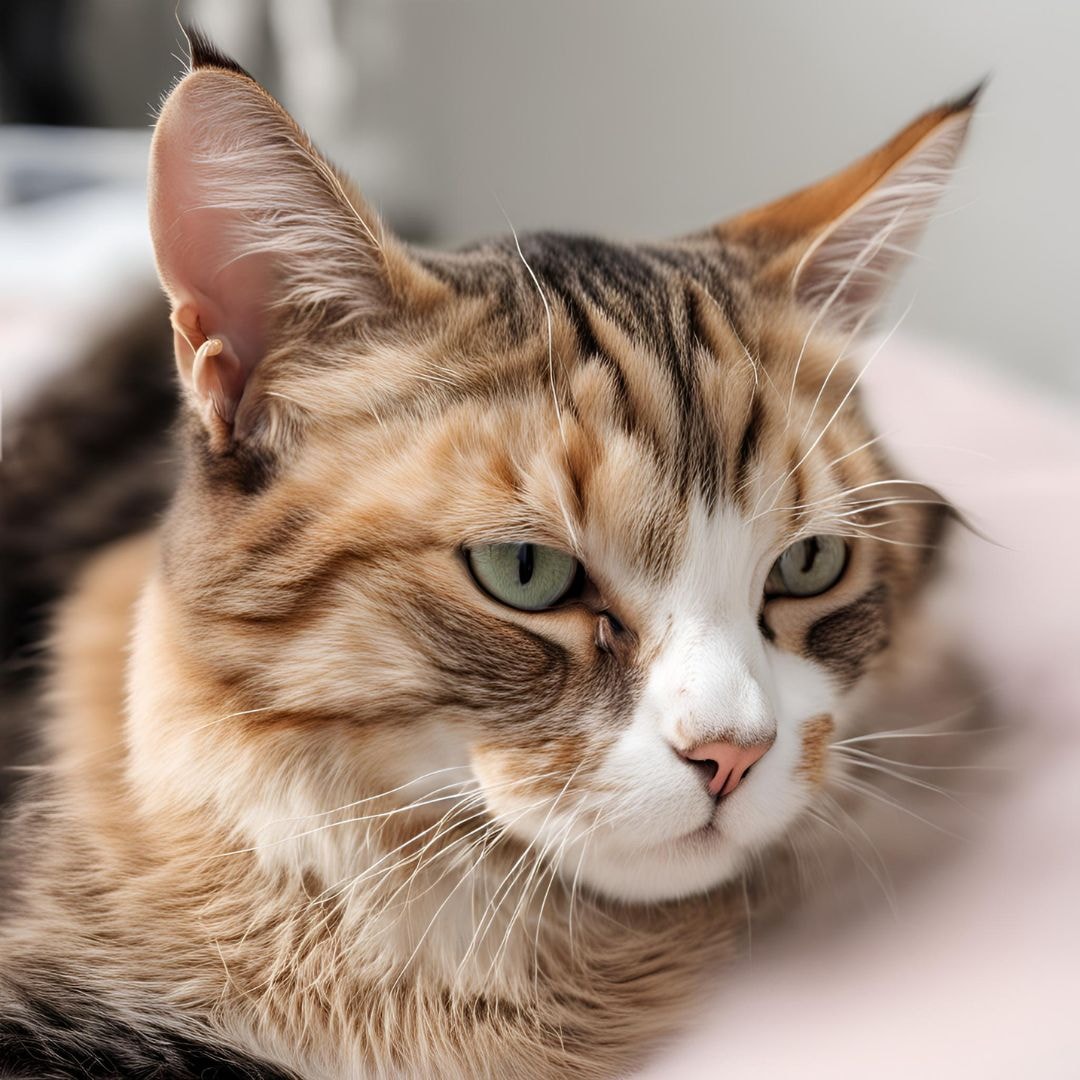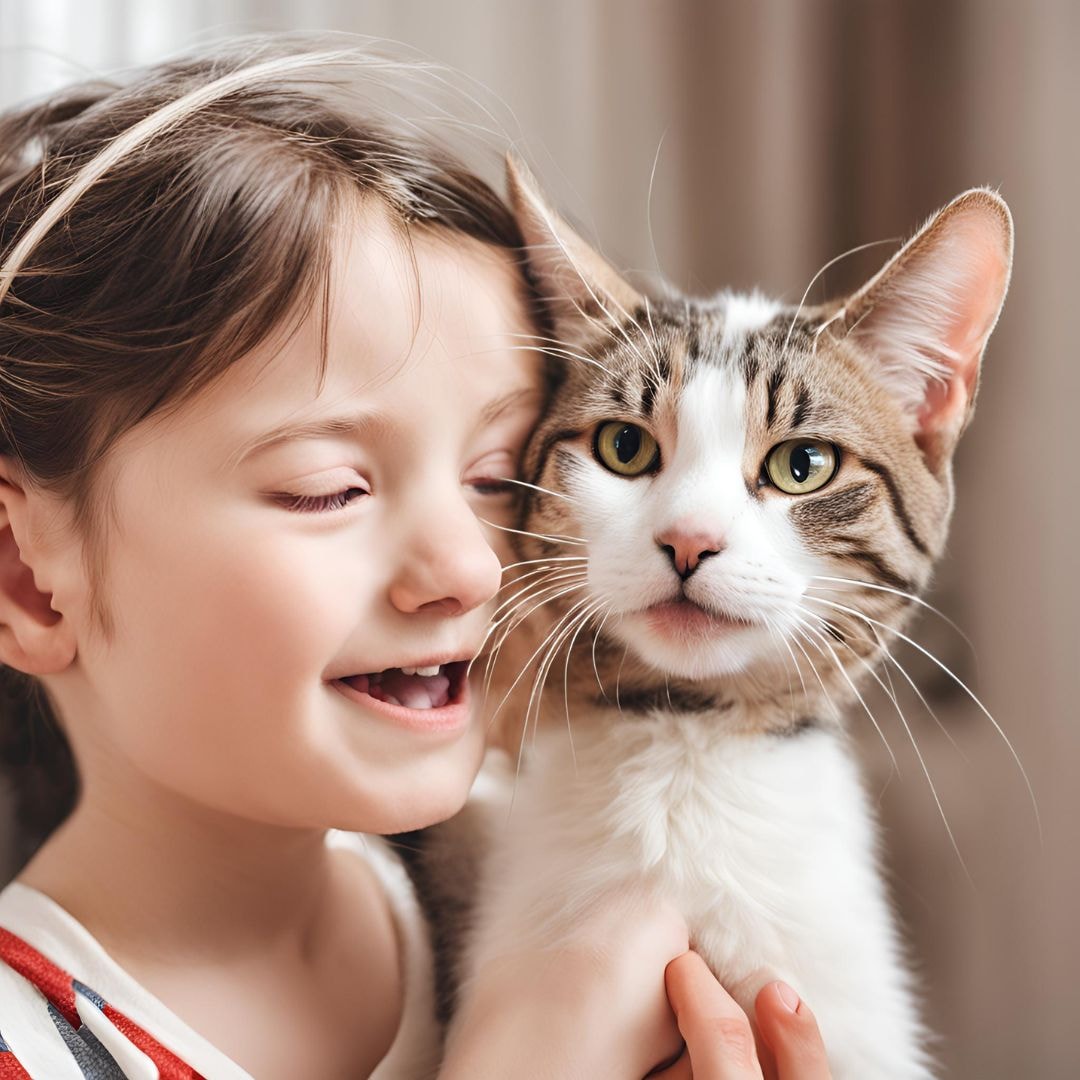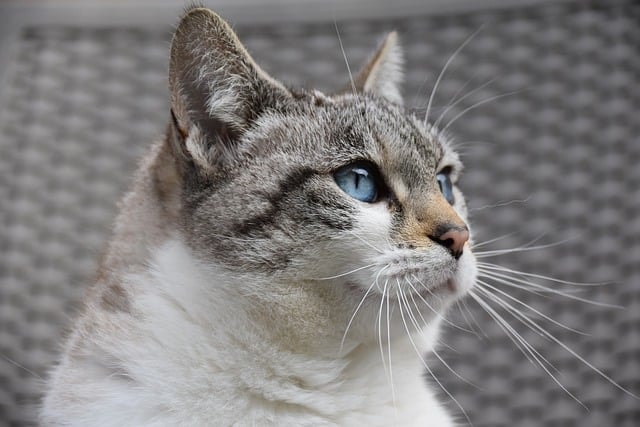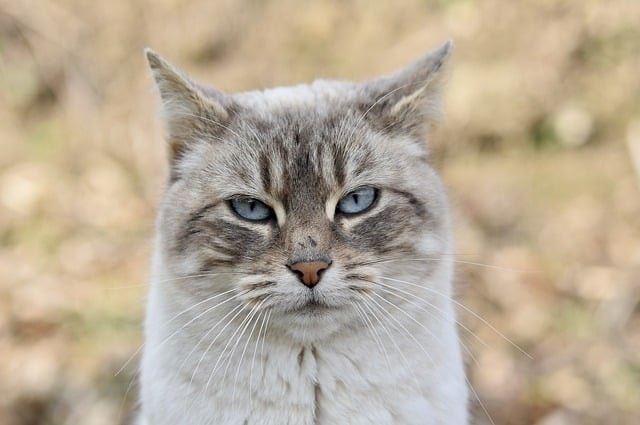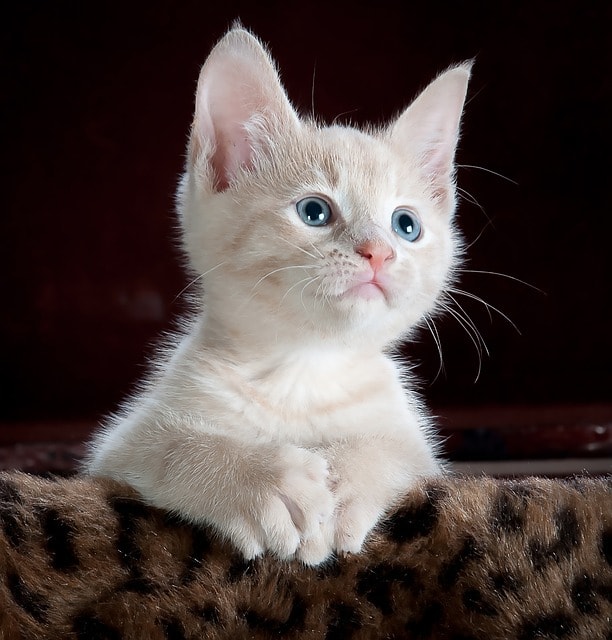Understanding Cat Protein Requirements As a professional feline nutrition and dietitian, I can assure you that “how much protein is in a cat” is not the right question – it’s all about understanding their carnivorous needs for a balanced, protein-rich diet. In this comprehensive guide, I’ll delve into the complexities of cat nutrition, the evolutionary basis of their meat-based diets, and the critical role of protein in maintaining feline health and wellness. We’ll explore the optimal protein requirement for cats, decode confusing pet food labels, and dispel common myths about feline excess dietary protein needs. By the end, you’ll have a clear understanding of how to ensure your cat receives the proper amount of high-quality dietary protein to thrive.
- Key Takeaways
- Unraveling the Mysteries of Cat Nutrition
- Why Understanding Feline Dietary Needs Matters
- 1.2 Separating Fact from Fiction in Cat Food Labels
- Cats: The Obligate Carnivores
- The Evolutionary Basis of a Meat-Based Diet
- 2.2 Dissecting the Feline Digestive System
- Protein: The Building Block of Cat Health
- The Role of Protein in Feline Growth and Development
- 3.2 Ensuring Optimal Muscle Mass and Lean Body Condition
- Animal Protein: The Gold Standard for Cats
- How Much Protein is in a Cat?
- Calculating Protein Requirements Based on Life Stage
- 5.2 The Impact of Breed, Activity Level, and Health Status
- Decoding Cat Food Labels
- Understanding Protein Sources and Quality
- 6.2 Navigating Buzzwords and Marketing Claims
- Feeding for Feline Health and Longevity
- Balancing Protein with Other Nutrients
- 7.2 Hydration: The Often-Overlooked Companion to Protein
- Homemade vs. Commercial Cat Foods
- The Pros and Cons of Each Approach
- Ensuring Complete and Balanced Nutrition
- FAQ
- 9.1 How much protein is in a cat?
- 9.2 What are the best protein sources for cats?
- 9.3 How do I calculate the protein needs for my cat?
- 9.4 How can I read cat food labels to understand the protein content?
- 9.5 Is homemade cat food better than commercial options?
Contents
- 1 Unraveling the Mysteries of Cat Nutrition
- 2 Protein: The Building Block of Cat Health
- 3 Animal Protein: The Gold Standard for Cats
- 3.1 cat foods
- 3.2 older cats
- 3.3 cat’s natural diet
- 3.4 amino acids
- 3.5 Calculating Cat Protein Requirements Based on Life Stage
- 3.6 The Impact of Breed, Activity Level, and Health Status
- 3.7 Understanding Protein Source and Quality
- 3.8 Hydration: The Often-Overlooked Companion to Protein
- 3.9 The Pros and Cons of Each Approach
- 3.10 Ensuring Complete and Balanced Nutrition
- 4 Understanding Feline Nutritional Needs
- 5 Benefits of High-Protein Cat Food
- 6 Choosing the Best High-Protein Cat Food
Unraveling the Mysteries of Cat Nutrition
Cats are often misunderstood when it comes to their dietary needs, with many pet owners relying on misinformation or marketing claims to guide their feeding decisions. As a feline nutritions expert, I’m passionate about shedding light on the importance of understanding feline dietary requirements and how to navigate the confusing world of pet food analysis and cat food labels.
Why Understanding Feline Dietary Needs Matters
At the heart of optimal feline nutritions lies a deep appreciation for the unique physiological and evolutionary traits of our feline friends. Cats are obligate carnivores, meaning they have a fundamental need for animal-based proteins to thrive. Neglecting this crucial aspect of their dietary requirements can lead to a host of health issues, from muscle wasting to compromised immune function. By grasping the intricacies of pet dietary needs, we can ensure our cats receive the nourishment they require to live long, healthy, and vibrant lives.
Separating Fact from Fiction in Cat Food Labels
The pet food industry is rife with confusing terminology, misleading claims, and a dizzying array of cat food compositions. As conscientious pet owners, it’s essential to develop the skills to understand cat food labels and identify high-quality, crude protein-rich options that align with the unique nutritional needs of cats. The pet food label, particularly the ‘Guaranteed Analysis’ section, is crucial for this as it provides percentages of various nutrients, including Crude Protein. In this section, we’ll dive deep into the world of pet– maintenance cat food analysis, empowering you to make informed decisions that prioritize your feline’s health and wellness.
Cats: The Obligate Carnivores
As the proud companions of our feline friends, it’s crucial that we understand the evolutionary basis and physiological adaptations that make cats obligate carnivore – creatures whose nutritional needs can only be met through a diet primarily composed of animal-based proteins. This foundational knowledge will empower us to provide our beloved cats with the optimal pet health information they require to thrive.
The Evolutionary Basis of a Meat-Based Diet
Cats have evolved over millions of years as apex predators, honing their hunting skills and developing a specialized digestive system perfectly suited to the carnivore diets that sustain them. Their sharp teeth, powerful jaws, and retractable claws are all adaptations that enable them to capture and consume their prey – a necessity in their evolutionary journey as obligate carnivore.
Delving deeper into their evolutionary history, we find that cats’ ancestors diverged from other carnivorous mammals around 55 million years ago, refining their physiological and behavioral traits to become the highly specialized hunters we know and love today. This pet dietary needs has had a profound impact on their cat food composition and nutritional requirements, shaping their unique digestive system and metabolic processes.
Dissecting the Feline Digestive System
The feline digestive system is a true marvel of evolutionary engineering, tailored to the cat health and wellness demands of their carnivorous lifestyle. Unlike their omnivorous counterparts, cats possess a shorter, more acidic gastrointestinal tract that is optimized for the rapid and efficient digestion of animal-based proteins.
Highly digestible protein is crucial for cats as it supports their unique digestive system, especially in managing conditions like chronic gastrointestinal disorders, chronic kidney disease, and critical illness. Cats also lack the necessary enzymes to effectively take highly digestible protein to break down and utilize carbohydrates, the primary energy source for many other species. This specialized adaptation underscores the critical importance of ensuring our feline friends receive an appropriate balance of this highly digestible protein in their diet to support their unique nutritional needs.
Protein: The Building Block of Cat Health
As the fundamental building block of a cat’s body, protein plays a pivotal role in feline growth, development, and overall health. By understanding the importance of protein in a cat’s diet, we can ensure our furry companions receive the necessary nutrients to thrive.
The Role of Protein in Feline Growth and Development
Protein is essential for supporting the rapid growth and development that characterize a cat’s early life stages. It fuels the formation and repair of tissues, promotes the healthy functioning of organs, and enables the production of enzymes and antibodies crucial for a cat’s well-being. Ensuring adequate Cat Protein Requirements helps them reach their full potential in terms of physical and cognitive maturation.
Ensuring Optimal Muscle Mass and Lean Body Condition
Beyond supporting growth and development, protein also plays a vital role in maintaining cat health and wellness by promoting optimal muscle mass and preserving lean body to maintain muscle mass throughout, which is crucial for a cat’s physical function. . Lean body mass and muscle tissue is essential for a cat’s strength, agility, and overall physical function. By meeting their pet dietary needs, we can help our cats achieve and maintain a muscular, trim physique that aligns with their natural carnivorous blueprint.
Protein Requirement Kitten Adult Cat Senior Cat 30-45% of total caloric intake 26-30% of total caloric intake 30-35% of total caloric intake Calculating Cat Protein Requirements Kittens require more protein to fuel rapid growth and development. Adult cats need a balanced diet with moderate protein levels to maintain muscle and full body weight, fat mass and overall health. Senior cats may require slightly higher protein levels to counteract the natural decline in body weight that it associated with aging.
Animal Protein: The Gold Standard for Cats
The feline protein sources found in animal-based proteins possess a superior nutritional profile compared to their plant protein-based alternatives. Cats’ carnivore diets have evolved to efficiently utilize and metabolize the amino acids, vitamins, and minerals found enough dietary protein in it. This makes them the optimal choice for maintaining a cat’s foods composition that supports a cat’s overall health and well-being. However, it is important to note that excess dietary animal protein alone can impact kidney health and the gut microbiome in feral cats, particularly in older cats with reduced protein assimilation ability.
By understanding the importance of animal protein source in a cat’s diet, we can make informed decisions about the cats food composition we provide our feline companions. Ensuring that our cats receive a diet rich in high-quality, animal-based proteins is essential for supporting their growth, development, and long-term wellness.
Determining the optimal amount of protein for a cat can be a complex and highly individualized process. As obligate carnivore, felines have unique dietary needs that go beyond simply calculating how much protein is in a cat. In this section, we’ll explore the various factors that influence a cat’s protein requirements, ensuring your furry friend receives the necessary nutrients to thrive.
cats or critically ill patients. For these cats, we offer Go! Solutions Carnivore recipes which are available in a range of different protein options and contain up to 84% of protein from animal protein source in our kibble recipes, and up to 99% in our Tetra Pak carton wet food recipes. However, high protein diets may not be suitable for all cats. In fact, excess dietary protein cannot be stored by the body. Rather, the nitrogen in protein is converted to urea and excreted in the urine, which is a wasteful end to a costly ingredient and contributes to harmful environmental ammonia levels. For most cats Choosing a food suitable for your cat can be confusing. The choice is seemingly endless, with hundreds of different types, brands, textures and flavours available. Cats are carnivores, and so protein is an important part of your pet’s nutrition. But how do you know how much protein is good? Are high or low protein diets really diet good? Or low protein diets not? What even is a protein level anyway?! Read on to find out what protein is, why cats need it and how much they actually should be getting! Table of contents What is protein? Why do cats need protein? Protein needs and how they differ Adult cats Kittens Senior cats Pregnant and nursing
cat foods
amino acids, referred to as the limiting amino acid, usually methionine, lysine or tryptophan. However, foods can easily be combined to provide the correct balance of all essential amino acids. These foods have what are called “complementary proteins”. Protein is a vital component and provides the additional essential amino acids, to help keep your pet strong and healthy. Whether your cat needs a diet that is high in protein, moderate in protein, or contains a novel protein, Go! Solutions offers a variety of recipes to meet your cat’s dietary needs. Recommended Solutions Carnivore
older cats
option works best for your household — or a mix of both! It’s a good idea to follow “life-stage feeding,” which matches your cat’s to the nutrition needed at different stages of life; look for kitten food for kittens, for healthy adult cats, maintenance food for healthy adult cats, and mature or senior food for older cats. If your cat is allergic to certain protein source or has other specific dietary needs, they may require a specialty diet ; always talk to your vet about any dietary concerns you have about your pet. What about table scraps and other raw foods? Some cat owners like to offer their pets fresh meat
cat’s natural diet
proteins are found throughout the cat’s body part, in muscle, bone, hair, skin and organs. Why do cats need protein? Cats are obligate’s carnivores – they rely on animal proteins as their main diet. they eat meat. They are physiologically designed to mostly eat meat, and therefore have quite specific dietary needs. A cat’s natural diet would consist of animal prey such as birds and small mammals. Cats are well adapted to diets that are low in carbohydrate, and high in protein, and rely much more on protein as an energy source than carbohydrate. Cats also require meat to provide certain vitamins and nutrients such as essential
Adult (11+) Cats Food SHOP BY BRAND Prescription Diet Science Diet COMMON HEALTH CONDITIONS Urinary Kidney Digestive Stress Weight Skin & Food Sensitivities OUR BRANDS Science Diet Prescription Diet Treats ABOUT US Our Company Nutritional Philosophy Sustainability Ingredients Quality & Safety FOR PET PARENTS Information for New Pet Parents Articles and Education Puppy Nutrition Kitten Nutrition COMUNITY SUPPORT Food, Shelter & Love Program Natural Disaster Support Shelter Partners Pet Adoption Resources SUPPORT Contact Hill’s Frequently Asked Questions Chat with Us Careers MEDIA Press Releases Media
amino acids
Deals Visit the Fear Free Directory Login/Register Categories Cats Life at Home How Much Protein Does Your Cat Need? By Tony Buffington, DVM Share on Reading Time: 3 minutes Most cat owners know that cats need to eat more protein than many other animals do. Cats break dietary protein down into amino acids, which they burn for energy or use to make new proteins. Cats cannot make all 22 amino acids they need; they need to get eleven of these (the essential amino acids) from food. This is why they need diets containing animals protein; its amino acid content more closely matches their needs than plant gastrointestinal tract. Not only is it important to check the pet food label to see the quantity of protein in the can but also look at where the protein is coming from. Cats have a fairly simple digestive tract and lack the ability to synthesize certain amino acids from their diet. There are four amino acids (taurine, arginine, methionine and cysteine) that must be provided in their diet and are best found in animal’s proteins, not plant proteins. In addition, given their relatively short gastrointestinal tract, they have a dramatically reduced ability to extract nutrients from plant material.
Calculating Cat Protein Requirements Based on Life Stage
A cat’s protein needs can vary significantly depending on their life stage. Kittens, for example, require a higher proportion of protein in their diet to support rapid growth and development, with recommendations ranging from 30-40% of their total caloric intake. Adult cats, on the other hand, may need between 20-30% protein to maintain optimal it and overall health. Senior cats, with their slower metabolisms, may do best with a slightly lower protein percentage, typically around 18-25%.
The Impact of Breed, Activity Level, and Health Status
In addition to life stage, a cat’s breed, activity level, and health status can also play a significant role in their protein requirements. For example, a large, active breed like the Maine Coon may need more protein to fuel their higher energy demands, perhaps around 30-35% of their diet. Conversely, a senior Persian cat with a lower activity level may thrive on a slightly lower protein intake of 20-25%.
Underlying health conditions can also impact a cat’s protein needs. Cats with kidney disease may benefit from a controlled protein intake to reduce the strain on their organs, while those recovering from surgery or illness may require higher protein levels to support tissue repair and for muscle growth and regeneration.
By taking these factors into account and working closely with your veterinarian, you can determine the appropriate protein intake to support your cat’s unique needs and ensure they maintain a healthy, balanced diet throughout their lives.
Decoding Cat Food Labels
Navigating the bewildering world of understanding cats food labels can be a daunting task, with a myriad of confusing terms and marketing claims. In this section, we’ll provide a roadmap for deciphering the information on pet food analysis, focusing on the critical factors of cats food composition and understanding balanced cat food nutrition labels. By equipping you with the knowledge to identify high-quality, protein-rich balanced cat food and kitten food and foods, you’ll be able to make informed decisions that prioritize your feline’s health and well-being.
11.5 grams of protein per pound. That’s why good commercial cat foods contain plenty of it. In the wild, your cat would get protein and other necessary nutrition from their prey. In order to be a healthy, full-grown cat, your pet’s diet should mostly consist of high-quality meat and fish. The best cat foods contain ingredients formulated to provide a complete and balanced diet with protein, amino acids, fatty acids, vitamins and minerals — and do not need to contain carbohydrate fillers, which cats can’t digest very well. What Should I Feed My Cat? Cats need certain amino acids and certain nutrients too, such as arginine and
When determining protein content, it’s important to note the difference between canned food, dog food maintenance cat food, and dry pet food. For example, canned food may list a lower protein percentage compared to dry food, but on a dry matter basis, the protein content can be higher. To calculate this, you can remove the moisture content from the equation to compare the true protein levels.
Understanding Protein Source and Quality
When it comes to cats food composition, the quality and source of cat protein requirements are paramount. Cats, as obligate carnivore, require a diet rich in animal-based proteins to thrive. However, not all protein source are created equal, and it’s essential to understand the nuances to ensure your cat receives all the essential nutrients for optimal nutrition.
dietary protein source
Officials (AAFCO), adult cats and kittens require a minimum of 26% and 30% protein on a dry matter basis, respectively, while ensuring that all essential amino acid requirements are met. The additional essential amino acids used are those that your cat cannot make on its own, so they must be obtained from food. Dietary protein source The amount of dietary protein your cat requires also depends on lifestyle and health conditions. Higher dietary protein levels may be needed in some circumstances, such as highly active cats or critically ill patients. For these cats, we offer Go! Solutions Carnivore recipes which are available in a range
which are best supplied by animal food products: taurine, which helps maintain normal reproduction, kitten growth, heart health, and eye health; and arginine, which is important in the nervous system and helps regulate ammonia levels in the body. Hill’s Feline GI Biome food. When cats do not have enough of dietary protein sources or specific amino acids, their bodies compensate by breaking down muscle tissue to meet their daily requirements. As cats age and their digestive systems and absorption become less efficient, their dietary protein sources and requirements increase. For this reason, cats over the age of 12 should benefit from increased
Navigating Buzzwords and Marketing Claims
The pet food industry is rife with buzzwords and marketing claims that can be confusing and misleading. Terms like “natural,” “organic,” and “premium” may sound appealing, but they don’t necessarily reflect the true quality or suitability of the product for your cat’s understanding cat nutrition labels. By learning to decipher the information on the label, you’ll be equipped to cut through the noise and identify the only cat foods that genuinely prioritize your feline’s optimal health and well-being.
Feeding for Feline Health and Longevity
Providing your cat with a balanced, protein-rich diet is essential for their overall cat health and wellness. In this section, we’ll explore the importance of balancing feline nutritions with other key nutrients, as well as the often-overlooked role of hydration in supporting your feline friend’s well-being. By understanding the holistic approach to pet dietary needs, you’ll be equipped to make cat feeding guidelines that prioritize your cat’s long-term health and happiness.
Balancing Protein with Other Nutrients+
Hydration: The Often-Overlooked Companion to Protein
Hydration is often an overlooked aspect of pet dietary needs, but it plays a vital role in supporting your cat’s overall health. Adequate water intake helps maintain proper kidney function, supports digestion, and ensures that your cat’s feline nutritions are properly absorbed and utilized. By encouraging your cat to stay hydrated, either through wet food, fresh water, or even cat-safe water fountains, you can further enhance the benefits of their protein-rich cat feeding guidelines.
Homemade vs. Commercial
As a feline nutrition expert, I’ve often been asked about the merits of homemade versus commercial cats foods. It’s a complex decision that requires careful consideration of various factors, including your cat’s individual needs, your own culinary skills, and the time and resources you have available. Let’s explore the pros and cons of each approach to help you determine the best path forward for your beloved feline companion.
The Pros and Cons of Each Approach
Homemade cat food offers the allure of tailoring your pet’s meals to their specific preferences and health requirements. By preparing the food yourself, you have complete control over the cat food composition and can ensure a balanced diet rich in high-quality animal-based proteins. This approach can be particularly beneficial for cats with unique dietary needs or sensitivities. However, it requires a significant investment of time, effort, and research to ensure you are meeting all of your cat’s nutritional requirements.
Ensuring Complete and Balanced Nutrition
Regardless of whether you choose to feed your cat homemade or commercial food, the ultimate goal is to provide a complete and balanced diet that meets their unique nutritional needs. This may require a bit of research, consultation with your veterinarian, and ongoing monitoring to ensure your cat’s body is thriving. By taking the time to understand the complexities of feline nutrition, you can make an informed decision that best supports your furry friend’s health and well-being. For cats with chronic kidney disease, it’s important to consider how dietary protein levels can affect their health, as high-protein diets may put stress on the kidneys and impact the gut microbiome. Additionally, protein digestibility is crucial for cats with existing kidney disease.
Understanding Feline Nutritional Needs
The Carnivorous Nature of Cats
Cats are obligate carnivore, meaning their bodies are designed to thrive on a diet primarily composed of meat. Unlike omnivores, such as dogs and humans, cats rely heavily on animal-based proteins to meet their nutritional requirements. This is because they lack certain enzymes needed to efficiently process plant-based nutrients.
The Role of Protein in a Cats Diet
Protein is vital for cats as it supports several critical bodily functions, including:
- Muscle Maintenance and Growth: Proteins provide the building blocks (amino acids) necessary for muscle development and repair.
- Energy Production: Cats metabolize proteins for energy, especially when their diet is low in carbohydrates.
- Immune Function: Amino acids found in proteins play a key role in maintaining a healthy immune system.
- Skin and Coat Health: High-quality proteins contribute to a shiny coat and healthy skin.
Benefits of High-Protein Cat Food
Improved Muscle Mass and Strength
Enhanced Weight Management
Better Energy Levels
Support for Healthy Aging
Choosing the Best High-Protein Cat Food
Not all proteins are created equal. When selecting high-protein cat’s food, it’s essential to look for quality sources. Here are some tips:
- Animal-Based Proteins: real meat, poultry, or fish as the primary ingredient.
- Avoid Fillers: Steer clear of products with excessive fillers like corn, wheat, and soy, which offer little nutritional value.
- Balanced Nutrition: Ensure the food provides a balanced diet, including essential vitamins and minerals.
Reading Labels and Ingredients
When choosing high-protein cat’s food, carefully read the labels. Look for:
- Crude Protein Content: A higher percentage of crude protein typically indicates a better product.
- Named Meat Sources: Specific meat sources like chicken, salmon, or beef are preferable over generic terms like “meat meal.”
- AAFCO Statement: Check for the Association of American Feed Control Officials (AAFCO) statement to ensure the food meets the minimum nutritional requirements for cats.
Consulting Your Veterinarian
Before making any significant changes to your cats diet, it’s always best to consult with your veterinarian. They can provide personalized recommendations based on your cat’s age, health status, and specific dietary needs.
Addressing Common Questions About High-Protein Cats Food
Can High-Protein Diet Cause Kidney Problems in Cats?
There is a common misconception that high-protein diet can cause kidney disease in cats. However, there is no scientific evidence supporting this claim. In fact, a high-quality, balanced diet with appropriate protein levels is essential for maintaining kidney health.
How Much Protein Does My Cat Need? Cat Protein Requirements
The exact cat’s daily protein intake and requirement can vary based on your cat’s age, activity level, and health status. Generally, adult cats should receive at least 26% of their daily calories from protein, while kittens and pregnant or lactating cats may need even more.
Are Grain-Free Diets Better for Cats?
Grain-free diets are not necessarily synonymous with high-protein diet. While some grain-free foods may offer higher protein content, it’s crucial to focus on the quality and source of protein rather than just avoiding grains.
High-protein cats food plays a crucial role in ensuring your feline companion remains healthy, active, and happy. By understanding the importance of protein and making informed choices for domestic cats about their food, you can provide the best nutrition for your furry friend. Always consult your veterinarian for personalized advice on food allergies and regularly monitor your cat’s health to ensure they thrive on their diet.
FAQ
How much protein is in a cat? Cat Protein Requirements
As an obligate carnivore, a cat’s protein needs are quite high – they require a diet that is around 30-45% protein on a dry matter basis. The exact amount of protein in a cat’s daily protein intake can vary depending on factors like breed, age, and activity level, but the key is ensuring they get high-quality, animal-based proteins to support their unique dietary requirements.
What are the best protein sources for cats?
For cats, animal-based proteins like chicken, fish, and meat are the gold standard. These protein sources provide the essential amino acids that felines need to thrive. Plant-based proteins can be included in moderation, but should not be the primary source of protein.
How do I calculate the protein needs for my cat?Cat Protein Requirements
Determining the optimal protein level of intake for your cat requires considering factors like their life stage, breed, activity level, and health status. As a general guideline, kittens and pregnant/nursing cats need the most protein, while adult cats require slightly less. It’s best to consult with your veterinarian or a feline nutritionist to ensure your cat is getting the right amount of protein.
How can I read cat’s dry food can labels to understand the protein content?
Decoding cat’s food labels can be tricky, but focusing on the correct protein levels and sources and guaranteed analysis can provide valuable insights. Look for animal-based proteins as the first few ingredients, and aim for a dry matter protein content of at least 30%. Beware of vague or misleading marketing claims – the guaranteed analysis will give you the most accurate picture of the protein level.
Is homemade cat food better than commercial options?
There are pros and cons to both homemade and commercial cat’s foods. Homemade diets allow you to have more control over the ingredients, but it’s critical to ensure they are complete and balanced to meet your cat’s nutritional needs. Commercial cat’s foods are formulated by experts to provide complete and balanced nutrition, but you’ll need to carefully read labels to find high-quality, protein-rich options. The best approach depends on your time, resources, and ability to create a nutritionally-complete homemade diet.



